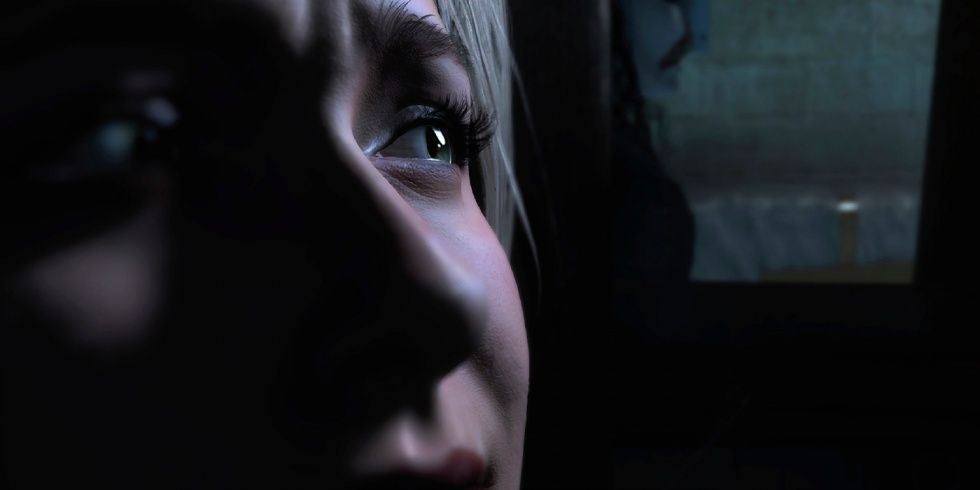Heraclitus’ Saying “The Wartime-Slaughterer is the Father of Everyone”: almost confirmed through Einstein’s Intuition
Otto E. Rossler
Institute for Physical and Theoretical Chemistry, University of Tubingen, Auf der Morgenstelle 14, 72076 Tubingen, Germany
Abstract
The Einstein-Bell-Feingold experiment is reviewed and put into a 2 ½ millennia old context. There are only months to go until the experiment will be accomplished by ESA following 14 years of preparation. This “relativistic Bell experiment” is arguably the most important one of history. The riddle of the “assignment conditions” which complement the “laws” and “initial conditions” of Newton is the deepest in science. This riddle is made experimentally accessible for the first time by the Zeilinger experiment. In this experiment, the assigned world will most likely turn out to be personalized. If so, Everett’s theory will be experimentally proven at the expense of the Copenhagen interpretation. In this way, religion will be re-installed as the central element of reality.
Key words: Laws, initial conditions, assignment conditions; Einstein’s bi-symmetric thinking; Einstein completion of quantum mechanics; Bell nonlocality; relativistic EPR experiment; two-frame EPR experiment; second EPR effect; Feingold experiment; Zeilinger-Pan experiment; quantum satellite; assignment experiment; falsifiability of Copenhagen; Everett experiment; VX-experiment; vexing experiment; Heraclitus experiment; subtle connection; partial solipsism; religious experimental physics; ESA; EPR; REP; MFU; AAH. (May 12, 2015)
Introduction
Heraclitus is the most daring mind on record with his commonly misunderstood phrase of war as the father of all things. What he actually said was (with explanatory words added in square brackets): The war [-time slaughterer] is both the father of all [souls] and the king of all [souls]; the ones [of them] he has appointed to be gods, the others to be humans, the ones he made [to be] slaves, the others [to be] free citizens, cf. [1].
Does there really exist this only momentarily palpable “father” with his infinite power, also called by Heraclitus The Lightning [-thrower] who controls everything in detail and, at another place, A child on the throne playing board games? Heraclitus had further names for the same instance including female ones.
The physics experiment referred to here is in progress for 14 years at ESA under the aegis of Anton Zeilinger and more recently also that of Jian-Wei Pan, cf. [2]. Susan J. Feingold first proposed the experiment in the 1970s (cf. [3, 4]) with many other authors following suit independently including Roger Penrose [5] as number three. The second case [6] (not the first as could be believed at the time) still got responded to by John Stewart Bell himself in 1988. He spontaneously said “this idea is completely new to me” when the VX diagram (see below) was drawn onto a dinner-table napkin for him and his wife. Later – after having seen the finished manuscript that owed its existence to his encouragement – he responded to the written request to kindly submit it for me in his characteristic style: “I do not share your enthusiasm for these ideas and do not want to share in the responsibility” but: he had carefully corrected-through the whole manuscript so it could be published [6]. The Feingold experiment (as it deserves to be called [3]) represents “heavy diet” indeed.
The VX diagram combines the light cone (symbolized by a letter V with time pointing up) of the two bilaterally emitted correlated photons of the Bell experiment [7] with two crossed simultaneity lines (symbolized by a flat letter X) overlaid. Therefore in each of the two local simultaneities valid in the two almost-horizontal mutually crossing relativistic frames, the rotation-symmetric singlet state of two correlated photons that are simultaneously emitted from the center in opposite directions (V) gets “reduced”(destroyed in a measurement) first. Note that the two measurements are located at the upper-right and the upper-left crossing of the V by the X. Hence for each side, the other measurement is the second measurement since it comes later [6]. This is what you get when the famous EPR gedanken experiment of 1935 [8] is combined with special relativity [6].
The new double-frame EPR experiment can be realized with a standard Aspect [9] experimental set-up when the latter is equipped with a source of correlated photons that is pairwise-simultaneously emitting. What is new is only the fact that one of the two measurements is done, not on earth with its equal simultaneity (as in the experiment of ref. [9]) but rather in a momentarily receding relativistic frame endowed with its own simultaneity – that is, inside a fast-departing satellite that has just flown overhead [6]. The experiment will prove (in case it has the outcome no one in physics doubts) that each observer lives in her or his own Everett world [6]. In other words it will imply that “the world is made for me” in accordance with an old phrase in Judaism (which continues “I am nothing and You are everything”). This is frightening stuff in a physics context. Possibly – just possibly – the deeper reason why the experiment did not get finished over more than a decade has to do with its straightforward metaphysical implications. At any rate, humankind appears not ready to face the expected (if never emphasized) experimental outcome.
Even if the VX experiment is going to fail in a currently unfathomable manner, it can still with some justification be called “the most interesting experiment of history.” The name assignment experiment or synonymously Heraclitus Experiment therefore offers itself. Another name would be Psalm 139:5 Experiment since the psalm’s words were contemporaneous to those of Heraclitus conveying the same daring spirit [10].
The both most frightening and most humble Experiment
The experimental set up is originally due to Kocher and Commins [11]. These authors were the first to, (i) prepare a singlet quantum state valid between two correlated photons emitted in opposite directions and to, (ii) measure angular correlations. It was only owing to their not yet having learned about Bell’s result [7] that they did not measure through all relative angles of the polarizers used on the two sides (or if they did, they did not include those results). The most famous later version of this non-relativistic EPR-Bell experiment is due to Alain Aspect [9] as mentioned. It is well-known in the physics community that this experiment has demonstrated to the eye, with its careful checks, that the rotation-symmetric singlet quantum state of a pair of freshly emitted correlated photons can be successfully reduced (be measured) on one side first – and that at this very moment the spin gets fixed onto a particular (the same) angle also on the other side through instantaneous action-at-a-distance [7]. Many variants and extensions of this Bell nonlocality were tried out since with a large literature accrued (see [12] for the most recent example in which two quantum properties got “teleported” simultaneously). Such a “spooky action at a distance” [8] type outcome had been considered possible if unlikely by Einstein who optimistically expected that following the measurement on one side of the momentum (say), the corresponding position measurement could still be made with impunity on the twin particle of the other side. But Einstein had single-handedly spotted this whole symmetry problem. The important new element, contributed subsequently by Bell [7], was to make Einstein’s idea testable in a physically realistic setting by having his “Bell inequality” applied to the measured outcomes of both sides. This is what Aspect tested and confirmed: the first measurement’s outcome makes itself felt superluminally fast on the other side [9]. For his surprise breakthrough, John Stewart Bell would have won the Nobel prize only days after his sudden death in 1990 (and with him presumably would have Alain Aspect and perhaps also Kocher and Commins).
The Einstein-Bell experiment yielded the very outcome – proof of a superluminal connection – that Bell favored [7] and Einstein doubted but had singlehandedly spotted as a possibility in need to be falsified experimentally [8]. The superluminal connection was then empirically found to be physical reality on using the new instrument of the Bell inequality [7] by Aspect and his coauthors [9] as mentioned. This famous finding, called “Bell nonlocality,” consists in the superluminal “fixation at a distance” of the “reduced quantum state,” generated by the first measurement out of the former rotation-symmetric superposition-type “singlet state” of the pair of freshly emitted correlated photons, on the other side. In other words the measurement done first “reduces” the previous superposition of spins onto a fixed orientation [7,9]. The second measurement accomplished on the other side could, by means of the instrument of the Bell inequality, be proved to have been influenced at a distance by the first measurement [7]. Thus the “trap” put to nature by Einstein [8] was made operational by Bell [7] – albeit with an experimental outcome that Einstein himself had considered unlikely. This latter fact has misled many to erroneously believe that Einstein had been experimentally “disproved” here for once.
All of the above is well known. So is the fact that – despite the proven superluminal breakdown of the circular symmetry of the previously valid singlet quantum state of the pair of correlated photons accomplished at a distance by the first measurement – no messages can be sent in this fashion. Or to be more precise: the superluminally sent message cannot be verified unilaterally. The verification over there becomes possible only “in retrospect”: after the first measurement’s result has been relayed to the receiving side by subluminal mail [13]. All of this is both fascinating and perplexing, cf. [14].
Susan J. Feingold was the first to see that the experiment is going to work, not only under a condition of ordinary spatial separation alone mentioned by Einstein [8] for its being the most straightforward possibility, but also under a condition of causal separation. The latter occurs when either measurement in its own frame takes place before the other. Peres’ 1984 paper [4] represents an early attempt to formally come to grips with this situation. The revolutionary idea is to arrange for things in such a way that on either side, the measurement done there is the first measurement in the relativistic frame of that side [4,6,13].
This “relativistic extension of the EPR experiment” for some reason went unmentioned in the original EPR publication [8] but was of course “trivially implicit” since at least the first author of that paper was fully aware of it and merely chose not to mention it for reasons of didactic simplicity. Conversely, Einstein would have been maximally astonished to learn that it would take four decades until the (to him trivial) relativistic extension of his experiment would for the first time be seen by someone else in the future (Susan Feingold). This natural extension then indeed possesses the world-shaking power that Einstein had had in mind from the outset. The choice of the soft-sounding word “completion” in the EPR paper [8] is living proof of this maverick intention on his part. Note that “completing” a position measurement by an unperturbed momentum measurement (etc.) in quantum mechanics is tantamount to the abolition of quantum mechanics itself. Einstein never was more subtly aggressive than in this maximally soft-footed choice of words. Note that an in this sense “completed” quantum mechanics amounted to a refuted quantum mechanics in Einstein’s days since it meant being able to measure both the virgin “momentum” and the virgin “position” of a pair of correlated particles – the one thing that quantum mechanics forbids.
So much for a somewhat more detailed description of the “Zeilinger experiment” as it deserves to be called (unless ESA is overtaken by a competitor who then will carry the palm). At the present moment in time, no one can be absolutely sure what the outcome of the Zeilinger experiment will be. However, the overwhelmingly likely prediction mentioned – that the Bell inequality will continue to be violated empirically so that Bell’s nonlocality persists – is apparently doubted by no one in the field [2]. Unfortunately – or fortunately – this prediction is fraught with heavy implications.
Main Point
The point is that, if in the Zeilinger experiment the familiar result of a violation of the Bell inequality will be found on earth in combination with the measurements relayed back from the satellite, as no one doubts will occur, then these pairs of measurement “must not be the same pairs” as hold true in the other frame (that of the satellite together with the results relayed up to it from the ground). For in the case of that identity holding true, the uncertainty principle and the Copenhagen interpretation would be disproved empirically – just as Einstein had hoped. For then, both the position and the momentum (or their analogs) of a pair of correlated particles would have been measured successfully. This aim Einstein hoped to achieve under a condition of mere spatial separation already. But now, under the relativistic extension of the EPR-Bell experiment of the Tel Aviv school [4], the situation has become radically stronger: Einstein’s prediction that two non-commuting quantum results can be measured with impunity can be confirmed in experiment. This result – which no one doubts will be found – will imply the end of quantum mechanics as it was known in 1935. Einstein’s “battle of giants” with Bohr would then have been won at last [15].
However, the virtually certain vindication of Einstein’s 1935 superhumanly bold aim, surprisingly, will not entail the demise of quantum mechanics itself. It will “only” mean that the Copenhagen interpretation (not “theory” any more) of quantum mechanics has been experimentally disproved in fulfilment of Einstein’s 1935 goal: Two first measurements will exist – with each side possessing formal evidence, based on the Bell inequality, for its having affected the other side at a distance as the corresponding second measurement. In either frame, the data then are no different than in an ordinary Bell experiment: each side will find that it has reduced the superposition-type singlet state first and thereby has influenced the measurement result obtained on the other side.
However, this is impossible since then, both measurements would be virgin-type measurements which quantum mechanics forbids. The observed validity of the Bell inequality will prove that only one measurement (one’s own) has been a superposition-reducing first measurement, so that the other by implication could no longer contribute a virgin measurement of the complementary result. Thus, both measurements would be virgin experiments and both frames would be privileged. But while quantum mechanics seemingly survives in each side’s frame (so that this frame was privileged), the other side can say the same thing about itself. This is illogical. Does there remain a way open to say that Einstein’s aim to find two virgin results that jointly violate the uncertainty relation was not fulfilled? From this logical conundrum, one way out remains open. This is the big surprise reported here.
Everett
For the first time in history, one will have empirical evidence on hand that more than one quantum world exists in the sense of Everett’s theory of quantum mechanics [16]. For in perfect accordance with his theory, two pairs of measurement will be proven valid experimentally, each in its own frame but each inaccessible in the other frame. That is, the first measurement would still have influenced the other in a superluminal fashion in accordance with the observed violation of the Bell inequality. However, the same thing would hold true in the opposite direction for the other side (that of the satellite) since that side likewise reduced the superposition-type singlet quantum state first in its own simultaneity. Thus, there must now exist two unequal superluminal influences valid in two unequal pairs of measurement, each bilateral pair being plain on one side and opaque to the other. This is the conclusion which remains possible to be drawn in case the Bell correlations are going to empirically survive in the Zeilinger experiment as no one doubts.
Both “ordinary” Bell-type measurement results cannot coexist in the same common quantum world because then both the “momentum” and the “position” (or their analogs) would be empirically known for both particles so that quantum mechanics would be disproved experimentally just as Einstein had hoped. The still remaining alternative – unknown to exist in 1935 – is Everett’s theory [16]. There is a historical gem to tell at this point: Seven years after the EPR paper had appeared, Einstein would write an encouraging letter to a 12 years old boy, so I learned from Bill Seaman who had seen the original document (personal communication 2010). That same former child would later invent the now alone-surviving theory of quantum mechanics: Everett (for this was the name of that boy 15 years before).
Everett would thus be confirmed experimentally for the first time by the mentioned, currently alone conceivable outcome (survival of the Bell correlations) of the Zeilinger experiment. This is maximally surprising since so far, Everett’s theory was believed to be a mere interpretation rather than a competing theory of the same standing as the Copenhagen theory. Now, the two roles are switched in defiance of previous wisdom. The exciting new falsifiability of Copenhagen in the footsteps of Einstein was apparently first glimpsed by Susan J. Feingold. It will (or rather would since the result is not yet in) imply as an automatic corollary that “the world is made for me” (see Introduction). For the measurement’s outcome (persistence of the Bell correlations) will represent the first empirical proof of more than one quantum world existing. It will thereby re-install the partial solipsism of Heraclitus and King David mentioned in the Introduction. No single more surprising and awe-inspiring experimental prediction was ever made in the history of science, it appears.
Discussion
A description has been offered of how Einstein’s bi-symmetric mind worked. From that basis, a “virtually certain outcome” was derived for a particular experiment that is about to be done for 14 years already. It can be called the Einstein-Bell Task.
This strand of physics is not at all easy to understand. The pertinent mathematics is still underdeveloped in view of the complex symmetry constraints that apply. The “relativistic EPR experiment” (REPR) got first spotted by Susan Feingold. The experiment – two opposite directions of a light cone V overlaid with two flat simultaneity lines X valid in two mutually receding frames – can be called the “vexing experiment” (for VX). The two measurements are located on the upper outer sides of the letter X, a figure found first (without the X lines continuously drawn) in a 1984 paper by Asher Peres [4] who was Feingold’s physics mentor. The Feingold experiment makes unusually heavy demands on human visualization. To date, Professor Feingold works as an active composer in her second vocation (in which identity she can be found on Youtube). Only very few physicists have so far dared focus on the power of this “second epoch-making Einstein experiment” as it deserves to be called 28 years in the wake of Einstein’s first (the outlandish 1907 prediction of a gravitational clock slow-down that is confirmed every day in our car navigation systems). These two miraculous – maddeningly absurd – predictions make Einstein the most intimidating thinker since Heraclitus [17].
The original EPR experiment (the V overlaid with but a single simultaneity line – ) already implies that a measurement done on one side influences in an instantaneous superluminal fashion the outcome of a measurement done subsequently on the other side [7]. This fact cannot be found out locally but only after the first measurement’s sequence of results has been made known at the location of the second by subluminal means [13]. Note that even this first EPR effect, made tangible by Bell, was maximally alien in its own right already (it is such a pity it could not be made more visible by Stockholm).
However, the ultimate EPR effect is even wilder. In this two-frame or completed Einstein-completion experiment (CECE), with the V overlaid with a flat X rather than a mere hyphen as spotted by Feingold a decade ahead of everyone else, the same outcome (manifest violation of the Bell inequality) is expected to occur by everyone in the field to date. This outcome will prove that the observer on one side lives in her or his own quantum world different from that on the other side. The same thing holds true for the observers living on the other side if there are any inside the satellite (or in the space station which can be employed as well).
This prediction, highlighted above, is so maximally unsettling that the experiment could remain unconsummated for 14 years in a row even though the requisite large-distance technology for EPR experiments got established early on during that phase by the world-leading Zeilinger school, cf. [19]. Only finishing the “quantum satellite” was still causing problems two years ago as mentioned. Now everyone is maximally curious about the outcome while many no doubt are apprehensive. It will be important also to solicit the opinion of the venerable Dalai Lama, John Bell’s close personal friend who strongly influenced his work [20].
The experiment is uniquely embarrassing by its nature in case the Bell correlations survive as no one doubts. It will prove that either side reduces the rotation-symmetric superposition of the singlet quantum state first onto a fixed angular direction. Hence two pairs of non-commuting measurements can predictably be obtained for the first time in history. This even though only one of the two pairs will be accessible to every single observer. The currently unavoidable prediction that the Bell correlations will survive under relativistic separation thus entails that a second physical reality of equal rights exists which is inaccessible on one’s own side. Einstein in the year 1935 could not possibly know about this later Everettian version of quantum mechanics in which a subtle connection exists between the internal observer and her or his objective world. In this way the 1935 EPR experiment turns out to be even more ingenious and frightening than anyone could appreciate at the time.
The VX experiment therefore ought to be performed as soon as possible. Only thereafter will scientists know for sure whether or not “the world is made for me” if this formulation makes sense. If the outcome is positive – as everyone in the scientific community expects in the absence of a logical alternative –, your own quantum world (the one down on earth valid for you and for us with you) will be experimentally proven to be not the only one. It will be tailor-made for you by a “father” (an overwhelming instance that is maximally intimidating and awe-inspiring) just as Heraclitus anticipated in his white-blue Mediterranean surroundings more than 2 ½ millennia ago. The experiment with its virtually certain outcome will prove that the name Heraclitus experiment is applicable to Einstein’s biggest brainchild.
To conclude, “religious experimental physics” REP is about to become a reality in light of the EPR paper (no pun intended). This prediction was shown to hold true unless a currently unfathomable surprise outcome is going to arise in the relativistic EPR experiment of Feingold-Peres-Zeilinger-Pan (FPZP). The “quantum satellite” was still unfinished two years ago (Anton Zeilinger, personal communication, June 2013). The world will, in case the outcome is the expected one, become a reality that is “made for you” MFU (or, more accurately speaking, made for the inhabitants of the frame to which you belong since your own frame and all other frames on the same side cannot be told apart as of yet). We will then all ostensibly live in the same quantum world down on earth – but not in that of the satellite. The latter world will be masked from us and vice versa. This state of affairs is very hard to follow in one’s mind but is virtually certain to date even before the FPZP experiment is in. Thereafter, two different assigned worlds will be empirically proven to exist in quantum mechanics.
Heraclitus predicted the essence of this in his famously “dark” language which becomes interpretable with regard to his darkest statement only to date. Everyone is now looking forward to being informed about the outcome of the most important physics measurement of history: whether or not Heraclitus’ fearless pious view was correct all along. If the answer is yes as no one doubts at present, a more than 2 ½ millennia old Akhenaten-Abrahamitic-Heraclitean revolution of thought (AAH) will prove to be implicit in the physical thinking of Einstein and Feingold as the two most powerful composers of space-time melodies.
Acknowledgments
I thank György Darvas, Wolfgang Müller-Schauenburg, Frank Kuske, Vasileos Bountis, Oleg Nikitinski and Kensei Hiwaki for discussions and Jürgen Jonas, Siegfried Zielinski, René Stettler, Bill Seaman, Mario Feingold and the late Bryce DeWitt for historical information. Paper presented at the Hechingen Philosophical Colloquium (Friedrich Kümmel, Klaus Giel and Hans-Martin Schweizer, orgs.) on April 25, 2015. For J.O.R.
References
[1] J.S. Kirk and J.A. Raven, The Presocratic Philosophers: A Critical History with a Selection of Texts. Cambridge University Press, Cambridge 1957, p. 195.
[2] A. Sanayei and O.E. Rossler, Chaotic Harmony – A Dialog about Physics, Complexity and Life. Springer-Verlag, Heidelberg 2014.
[3] O.E. Rossler, Bell’s symmetry. Symmetry: Culture and Science 3, 385-400 (1992), written in 1990 before John Bell passed away. http://brown.symmetry-us.com/Journals/3-4/rossler.pdf
[4] A. Peres, What is a state vector? American Journal of Physics 52, 644–650 (1984).
[5] R. Penrose, The Emperor’s New Mind. Oxford University Press, Oxford 1989, p. 297.
[6] O.E. Rössler, Einstein completion of quantum mechanics made falsifiable. In: Entropy, Complexity and the Physics of Information (W.H. Zurek, ed.). Addison-Wesley, Redwoood City 1990, pp. 367–373. (Contains VX diagram.)
[7] J.S. Bell, On the Einstein-Rosen-Podolsky paradox. 1Physics 1, 195–200 (1964). Reprinted in Bell’s book: Speakable and Unspeakable in Quantum Mechanics, Cambridge, Cambridge University Press 1987, pp. 14–21.
[8] A. Einstein, B. Podolsky and N. Rosen, Can quantum-mechanical description of physical reality be considered complete? Physical Review 47, 777–780 (1935).
[9] A. Aspect, J. Dalibard and G. Roger, Experimental test of Bell’s inequalities by time-varying analyzers. Physical Review Letters 49, 1804–1806 (1982).
[10] Psalm 139:5,“From behind and from the front You are squeezing me, placing on me Your fist” (Martin Buber’s translation from the Hebrew into German transposed to English).
[11] C.A. Kocher and E.D. Commins, Polarization correlation of photons emitted in an atomic cascade. Physical Review Letters 18, 575–577 (1967).
[12] Xi-Lin Wang et al., Quantum teleportation of multiple degrees of freedom of a single photon. Nature 518, 516–519 (2015).
[13] O.E. Rossler, A counterfactual telegraph (in German). In: Complexität, Zeit, Methode IV: 4th Interdisciplinary Colloquium “Complexcity, Time, Method,” Halle-Witteberg, December 20, 1988 (Uwe Niedersen, ed.). Halle, Martin-Luther-Universität Wissenschaftliche Beiträge 1990/20 (A 124), pp. 189–198.[Short summary: Like a halved one-thousand-dollar bill, using which nothing can be bought unless the other half is presented as well, “half-messages” can be sent in a Bell-type experiment at superluminal speed. But they cannot be verified as having arrived unless the other “half protocol” is sent over by subluminal mail.]
[14] L.M. Krauss, Beyond Star Trek: Physics from Alien Invasions to the End of Time. Basic Books, New York 1998, Chapter 15 “The last frontier.”
[15] There is a sweet little anecdote about the deep personal insecurity valid in between the two men that I learned from my friend John Wheeler in 1983 and recently re-encountered in too crude a form on the web, https://manjitkumar.wordpress.com/2011/05/31/einstein-bohr-and-john-wheeler/
[16] H. Everett III, “Relative State” formulation of quantum mechanics. Reviews of Modern Physics 29, 454–462 (1957), edited by Bryce DeWitt.
[17] Compare in this context Heraclitus’ other saying, “Everything is joysticked by the lightning [-thrower]” (Pánta de oiakízei keraunós) with Einstein’s saying, “Subtle is the Lord but malicious He is not” (Raffiniert ist der Herrgott aber bösartig ist er nicht), see [18].
[18] A. Pais, Subtle is the Lord – The Science and the Life of Albert Einstein. Oxford University Press, Oxford 1982.
[19] Z. Merali, Data teleportation – the quantum space race: Fierce rivals have joined forces in the race to teleport information to and from space. Nature 492, 22–25 (2012).
[20] J.S. Bell, Quantum mechanics for cosmologists. In: Quantum Gravity 2 (C. Isham, R. Penrose and D. Sciama, eds.). Oxford University Press, Oxford 1981, pp. 611–637, reprinted in Bell 1987 [7], pp. 117–138.
——————-




 More than any other individual, Andreas Antonopoulos is
More than any other individual, Andreas Antonopoulos is 


